- Home
- D. H. Lawrence
The Bad Side of Books Page 3
The Bad Side of Books Read online
Page 3
South of the Brenner again, in the Austrian Tirol, I have not seen anyone salute the Christus: not even the guides. As one goes higher the crucifixes get smaller and smaller. The wind blows the snow under the tiny shed of a tiny Christ: the guides tramp stolidly by, ignoring the holy thing. That surprised me. But perhaps these were particularly unholy men. One does not expect a great deal of an Austrian, except real pleasantness.
So, in Austria, I have seen a fallen Christus. It was on the Jaufen, not very far from Meran. I was looking at all the snow-peaks all around, and hurrying downhill, trying to get out of a piercing wind, when I almost ran into a very old Martertafel. The wooden shed was silver-grey with age, and covered on the top with a thicket of lichen, weird, grey-green, sticking up its tufts. But on the rocks at the foot of the cross was the armless Christ, who had tumbled down and lay on his back in a weird attitude. It was one of the old, peasant Christs, carved out of wood, and having the long, wedge-shaped shins and thin legs that are almost characteristic. Considering the great sturdiness of a mountaineer’s calves, these thin, flat legs are interesting. The arms of the fallen Christ had broken off at the shoulders, and they hung on their nails, as ex voto limbs hang in the shrines. But these arms dangled from their palms, one at each end of the cross, the muscles, carved in wood, looking startling, upside down. And the icy wind blew them backwards and forwards. There, in that bleak place among the stones, they looked horrible. Yet I dared not touch either them or the fallen image. I wish some priest would go along and take the broken thing away.
So many Christs there seem to be: one in rebellion against his cross, to which he was nailed; one bitter with the agony of knowing he must die, his heart-beatings all futile; one who felt sentimental; one who gave in to his misery; one who was a sensationalist; one who dreamed and fretted with thought. Perhaps the peasant carvers of crucifixes are right, and all these were found on the same cross. And perhaps there were others too: one who waited for the end, his soul still with a sense of right and hope; one ashamed to see the crowd make beasts of themselves, ashamed that he should provide for their sport; one who looked at them and thought: ‘And I am of you. I might be among you, yelling at myself in that way. But I am not, I am here. And so –’
All those Christs, like a populace, hang in the mountains under their little sheds. And perhaps they are falling, one by one. And I suppose we have carved no Christs, afraid lest they should be too like men, too like ourselves. What we worship must have exotic form.
REVIEW OF DEATH IN VENICE BY THOMAS MANN (1913)
Thomas Mann is perhaps the most famous of German novelists now writing. He, and his elder brother, Heinrich Mann, with Jakob Wassermann, are acclaimed the three artists in fiction of present-day Germany.
But Germany is now undergoing that craving for form in fiction, that passionate desire for the mastery of the medium of narrative, that will of the writer to be greater than and undisputed lord over the stuff he writes, which is figured to the world in Gustave Flaubert.
Thomas Mann is over middle age, and has written three or four books: Buddenbrooks, a novel of the patrician life of Lübeck; Tristan, a collection of six Novellen; Königliche Hoheit, an unreal Court romance; various stories, and lastly, Der Tod in Venedig. The author himself is the son of a Lübeck Patrizier.
It is as an artist rather than as a story-teller that Germany worships Thomas Mann. And yet it seems to me, this craving for form is the outcome, not of artistic conscience, but of a certain attitude to life. For form is not a personal thing like style. It is impersonal like logic. And just as the school of Alexander Pope was logical in its expressions, so it seems the school of Flaubert is, as it were, logical in its æsthetic form. ‘Nothing outside the definite line of the book,’ is a maxim. But can the human mind fix absolutely the definite line of a book, any more than it can fix absolutely any definite line of action for a living being?
Thomas Mann, however, is personal, almost painfully so, in his subject-matter. In ‘Tonio Kröger,’ the long Novelle at the end of the Tristan volume, he paints a detailed portrait of himself as a youth and younger man, a careful analysis. And he expresses at some length the misery of being an artist. ‘Literature is not a calling, it is a curse.’ Then he says to the Russian painter girl: ‘There is no artist anywhere but longs again, my love, for the common life.’ But any young artist might say that. It is because the stress of life in a young man, but particularly in an artist, is very strong, and has as yet found no outlet, so that it rages inside him in Sturm und Drang. But the condition is the same, only more tragic, in the Thomas Mann of fifty-three. He has never found any outlet for himself, save his art. He has never given himself to anything but his art. This is all well and good, if his art absorbs and satisfies him, as it has done some great men, like Corot. But then there are the other artists, the more human, like Shakespeare and Goethe, who must give themselves to life as well as to art. And if these were afraid, or despised life, then with their surplus they would ferment and become rotten. Which is what ails Thomas Mann. He is physically ailing, no doubt. But his complaint is deeper: it is of the soul.
And out of this soul-ailment, this unbelief, he makes his particular art, which he describes, in ‘Tonio Kröger,’ as ‘Wählerisch, erlesen, kostbar, fein, reizbar gegen das Banale, und aufs höchste empfindlich in Fragen des Taktes und Geschmacks.’ He is a disciple, in method, of the Flaubert who wrote: ‘I worked sixteen hours yesterday, today the whole day, and have at last finished one page.’ In writing of the Leitmotiv and its influence, he says: ‘Now this method alone is sufficient to explain my slowness. It is the result neither of anxiety nor indigence, but of an overpowering sense of responsibility for the choice of every word, the coining of every phrase . . . a responsibility that longs for perfect freshness, and which, after two hours work, prefers not to undertake an important sentence. For which sentence is important, and which not? Can one know before hand whether a sentence, or part of a sentence may not be called upon to appear again as Motiv, peg, symbol, citation or connexion? And a sentence which must be heard twice must be fashioned accordingly. It must – I do not speak of beauty – possess a certain high level, and symbolic suggestion, which will make it worthy to sound again in any epic future. So every point becomes a standing ground, every adjective a decision, and it is clear that such work is not to be produced off-hand.’
This, then, is the method. The man himself was always delicate in constitution. ‘The doctors said he was too weak to go to school, and must work at home.’ I quote from Aschenbach, in Der Tod in Venedig. ‘When he fell, at the age of fifty-three, one of his closest observers said of him: “Aschenbach has always lived like this” – and he gripped his fist hard clenched; “never like this” – and he let his open hand lie easily on the arm of the chair.’
He forced himself to write, and kept himself to the work. Speaking of one of his works, he says: ‘It was pardonable, yea, it showed plainly the victory of his morality, that the uninitiated reader supposed the book to have come of a solid strength and one long breath; whereas it was the result of small daily efforts and hundreds of single inspirations.’
And he gives the sum of his experience in the belief: ‘dass beinahe alles Grosse, was dastehe, als ein Trotzdem dastehe, trotz Kummer und Qual, Armut, Verlassenheit, Körperschwäche, Laster, Leidenschaft und tausend hemmnischen Zustände gekommen sei.’ And then comes the final revelation, difficult to translate. He is speaking of life as it is written into his books:
‘For endurance of one’s fate, grace in suffering, does not only mean passivity, but is an active work, a positive triumph, and the Sebastian figure is the most beautiful symbol, if not of all art, yet of the art in question. If one looked into this portrayed world and saw the elegant self-control that hides from the eyes of the world to the last moment the inner undermining, the biological decay; saw the yellow ugliness which, sensuously at a disadvantage, could blow its choking heat of desire to a pure flame, and even rise to sovereignty in the kin
gdom of beauty; saw the pale impotence which draws out of the glowing depths of its intellect sufficient strength to subdue a whole vigorous people, bring them to the foot of the Cross, to the feet of impotence; saw the amiable bearing in the empty and severe service of Form; saw the quickly enervating longing and art of the born swindler: if one saw such a fate as this, and all the rest it implied, then one would be forced to doubt whether there were in reality any other heroism than that of weakness. Which heroism, in any case, is more of our time than this?’
Perhaps it is better to give the story of Der Tod in Venedig, from which the above is taken, and to whose hero it applies.
Gustav von Aschenbach, a fine, famous author, over fifty years of age, coming to the end of a long walk one afternoon, sees as he is approaching a burying place, near Munich, a man standing between the chimeric figures of the gateway. This man in the gate of the cemetery is almost the Motiv of the story. By him, Aschenbach is infected with a desire to travel. He examines himself minutely, in a way almost painful in its frankness, and one sees the whole soul of this author of fifty-three. And it seems, the artist has absorbed the man, and yet the man is there, like an exhausted organism on which a parasite has fed itself strong. Then begins a kind of Holbein Totentanz. The story is quite natural in appearance, and yet there is the gruesome sense of symbolism throughout. The man near the burying ground has suggested travel – but whither? Aschenbach sets off to a watering place on the Austrian coast of the Adriatic, seeking some adventure, some passionate adventure, to which his sick soul and unhealthy body have been kindled. But finding himself on the Adriatic, he knows it is not thither that his desire draws him, and he takes ship for Venice. It is all real, and yet with a curious sinister unreality, like decay, the ‘biological decay.’ On board there is a man who reminds one of the man in the gateway, though there is no connexion. And then, among a crowd of young Poles who are crossing, is a ghastly fellow, whom Aschenbach sees is an old man dressed up as young, who capers unsuspected among the youths, drinks hilariously with them, and falls hideously drunk at last on the deck, reaching to the author, and slobbering about ‘dem allerliebsten, dem schönsten Liebchen.’ Suddenly the upper plate of his false teeth falls on his underlip.
Aschenbach takes a gondola to the Lido, and again the gondolier reminds one of the man in the cemetery gateway. He is, moreover, one who will make no concession, and, in spite of Aschenbach’s demand to be taken back to St Mark’s, rows him in his black craft to the Lido, talking to himself softly all the while. Then he goes without payment.
The author stays in a fashionable hotel on the Lido. The adventure is coming, there by the pallid sea. As Aschenbach comes down into the hall of the hotel, he sees a beautiful Polish boy of about fourteen, with honey-coloured curls clustering round his pale face, standing with his sisters and their governess.
Aschenbach loves the boy – but almost as a symbol. In him he loves life and youth and beauty, as Hyacinth in the Greek myth. This, I suppose; is blowing the choking heat to pure flame, and raising it to the kingdom of beauty. He follows the boy, watches him all day long on the beach, fascinated by beauty concrete before him. It is still the Künstler and his abstraction: but there is also the ‘yellow ugliness, sensually at a disadvantage,’ of the elderly man below it all. But the picture of the writer watching the folk on the beach gleams and lives with a curious, gold-phosphorescent light, touched with the brightness of Greek myth, and yet a modern seashore with folks on the sands, and a half-threatening, diseased sky.
Aschenbach, watching the boy in the hotel lift, finds him delicate, almost ill, and the thought that he may not live long fills the elderly writer with a sense of peace. It eases him to think the boy should die.
Then the writer suffers from the effect of the sirocco, and intends to depart immediately from Venice. But at the station he finds with joy that his luggage has gone wrong, and he goes straight back to the hotel. There, when he sees Tadzin again, he knows why he could not leave Venice.
There is a month of hot weather, when Aschenbach follows Tadzin about, and begins to receive a look, loving, from over the lad’s shoulder. It is wonderful, the heat, the unwholesomeness, the passion in Venice. One evening comes a street singer, smelling of carbolic acid, and sings beneath the veranda of the hotel. And this time, in gruesome symbolism, it is the man from the burying ground distinctly.
The rumour is, that the black cholera is in Venice. An atmosphere of secret plague hangs over the city of canals and palaces. Aschenbach verifies the report at the English bureau, but cannot bring himself to go away from Tadzin, nor yet to warn the Polish family. The secretly pest-smitten days go by. Aschenbach follows the boy through the stinking streets of the town and loses him. And on the day of the departure of the Polish family, the famous author dies of the plague.
It is absolutely, almost intentionally, unwholesome. The man is sick, body and soul. He portrays himself as he is, with wonderful skill and art, portrays his sickness. And since any genuine portrait is valuable, this book has its place. It portrays one man, one atmosphere, one sick vision. It claims to do no more. And we have to allow it. But we know it is unwholesome – it does not strike me as being morbid for all that, it is too well done – and we give it its place as such.
Thomas Mann seems to me the last sick sufferer from the complaint of Flaubert. The latter stood away from life as from a leprosy. And Thomas Mann, like Flaubert, feels vaguely that he has in him something finer than ever physical life revealed. Physical life is a disordered corruption, against which he can fight with only one weapon, his fine æsthetic sense, his feeling for beauty, for perfection, for a certain fitness which soothes him, and gives him an inner pleasure, however corrupt the stuff of life may be. There he is, after all these years, full of disgusts and loathing of himself as Flaubert was, and Germany is being voiced, or partly so, by him. And so, with real suicidal intention, like Flaubert’s, he sits, a last too-sick disciple, reducing himself grain by grain to the statement of his own disgust, patiently, self-destructively, so that his statement at least may be perfect in a world of corruption. But he is so late.
Already I find Thomas Mann, who, as he says, fights so hard against the banal in his work, somewhat banal. His expression may be very fine. But by now what he expresses is stale. I think we have learned our lesson, to be sufficiently aware of the fulsomeness of life. And even while he has a rhythm in style, yet his work has none of the rhythm of a living thing, the rise of a poppy, then the after uplift of the bud, the shedding of the calyx and the spreading wide of the petals, the falling of the flower and the pride of the seed-head. There is an unexpectedness in this such as does not come from their carefully plotted and arranged developments. Even Madame Bovary seems to me dead in respect to the living rhythm of the whole work. While it is there in Macbeth like life itself.
But Thomas Mann is old – and we are young. Germany does not feel very young to me.
FROM STUDY OF THOMAS HARDY (1914)
CHAPTER 3
Containing Six Novels and the Real Tragedy
This is supposed to be a book about the people in Thomas Hardy’s novels. But if one wrote everything they give rise to, it would fill the Judgment Book.
One thing about them is that none of the heroes and heroines care very much for money, or immediate self-preservation, and all of them are struggling hard to come into being. What exactly the struggle into being consists in, is the question. But most obviously, from the Wessex novels, the first and chiefest factor is the struggle into love and the struggle with love: by love, meaning the love of a man for a woman and a woman for a man. The via media to being, for man or woman, is love, and love alone. Having achieved and accomplished love, then the man passes into the unknown. He has become himself, his tale is told. Of anything that is complete there is no more tale to tell. The tale is about becoming complete, or about the failure to become complete.
It is urged against Thomas Hardy’s characters that they do unreasonable things – quite
, quite unreasonable things. They are always going off unexpectedly and doing something that nobody would do. That is quite true, and the charge is amusing. These people of Wessex are always bursting suddenly out of bud and taking a wild flight into flower, always shooting suddenly out of a tight convention, a tight, hide-bound cabbage state into something quite madly personal. It would be amusing to count the number of special marriage licenses taken out in Hardy’s books. Nowhere, except perhaps in Jude, is there the slightest development of personal action in the characters: it is all explosive. Jude, however, does see more or less what he is doing, and acts from choice. He is more consecutive. The rest explode out of the convention. They are people each with a real, vital, potential self, even the apparently wishy-washy heroines of the earlier books, and this self suddenly bursts the shell of manner and convention and commonplace opinion, and acts independently, absurdly, without mental knowledge or acquiescence.

 Look! We Have Come Through!
Look! We Have Come Through!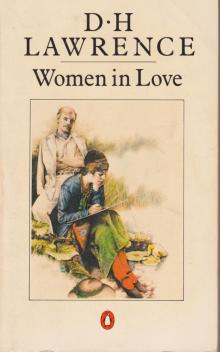 Women in Love
Women in Love The Ladybird
The Ladybird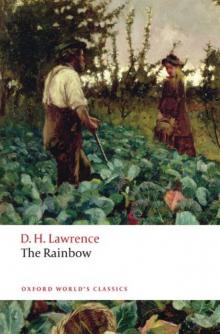 The Rainbow
The Rainbow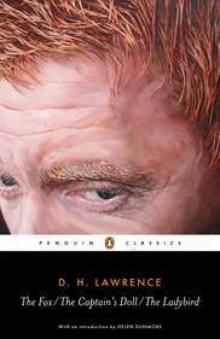 The Captain's Dol
The Captain's Dol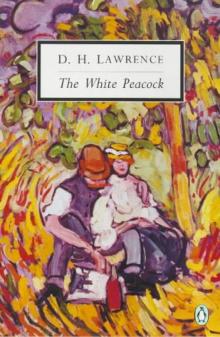 The White Peacock
The White Peacock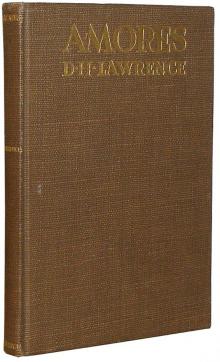 Amores
Amores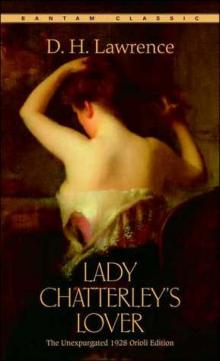 Lady Chatterley's Lover
Lady Chatterley's Lover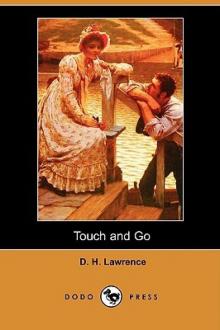 Touch and Go
Touch and Go The Wintry Peacock
The Wintry Peacock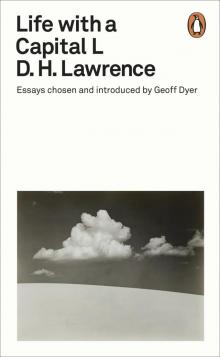 Life with a Capital L
Life with a Capital L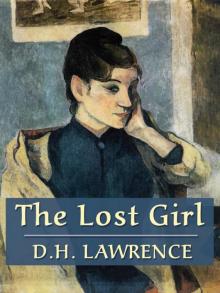 The Lost Girl
The Lost Girl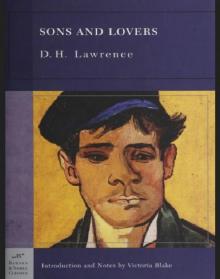 Sons and Lovers
Sons and Lovers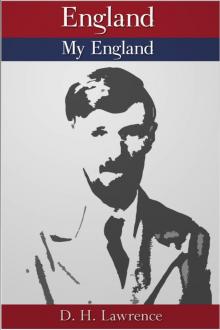 England, My England
England, My England New Poems
New Poems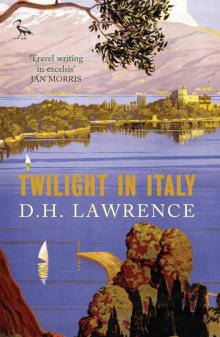 Twilight in Italy
Twilight in Italy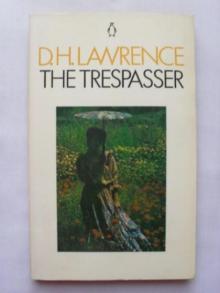 The Trespasser
The Trespasser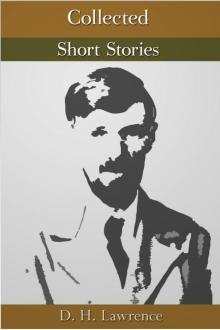 The Collected Short Stories
The Collected Short Stories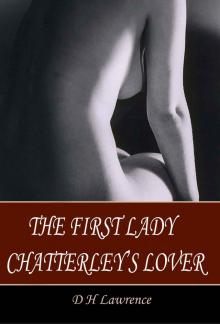 The First Lady Chatterley's Lover
The First Lady Chatterley's Lover Kangaroo
Kangaroo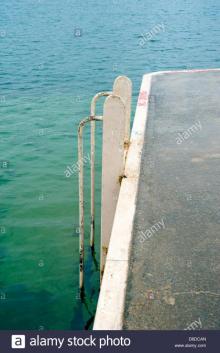 Bay
Bay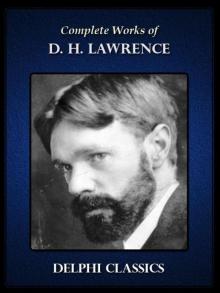 Complete Works of D.H. Lawrence
Complete Works of D.H. Lawrence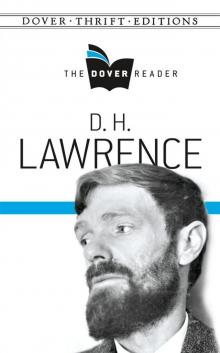 D H Lawrence- The Dover Reader
D H Lawrence- The Dover Reader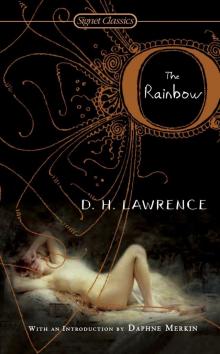 The Rainbow (100th Anniversary ed.)
The Rainbow (100th Anniversary ed.)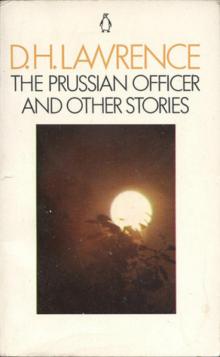 The Prussian Officer
The Prussian Officer Women in Love (Barnes & Noble Classics Series)
Women in Love (Barnes & Noble Classics Series) John Thomas and Lady Jane
John Thomas and Lady Jane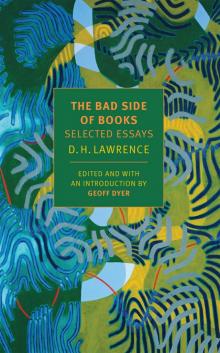 The Bad Side of Books
The Bad Side of Books Sons and Lovers (Barnes & Noble Classics Series)
Sons and Lovers (Barnes & Noble Classics Series) Selected Stories
Selected Stories Collected Short Stories
Collected Short Stories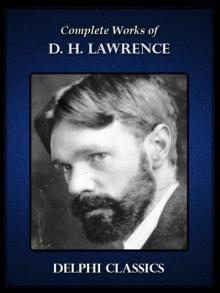 Complete Works of D.H. Lawrence (Illustrated)
Complete Works of D.H. Lawrence (Illustrated)